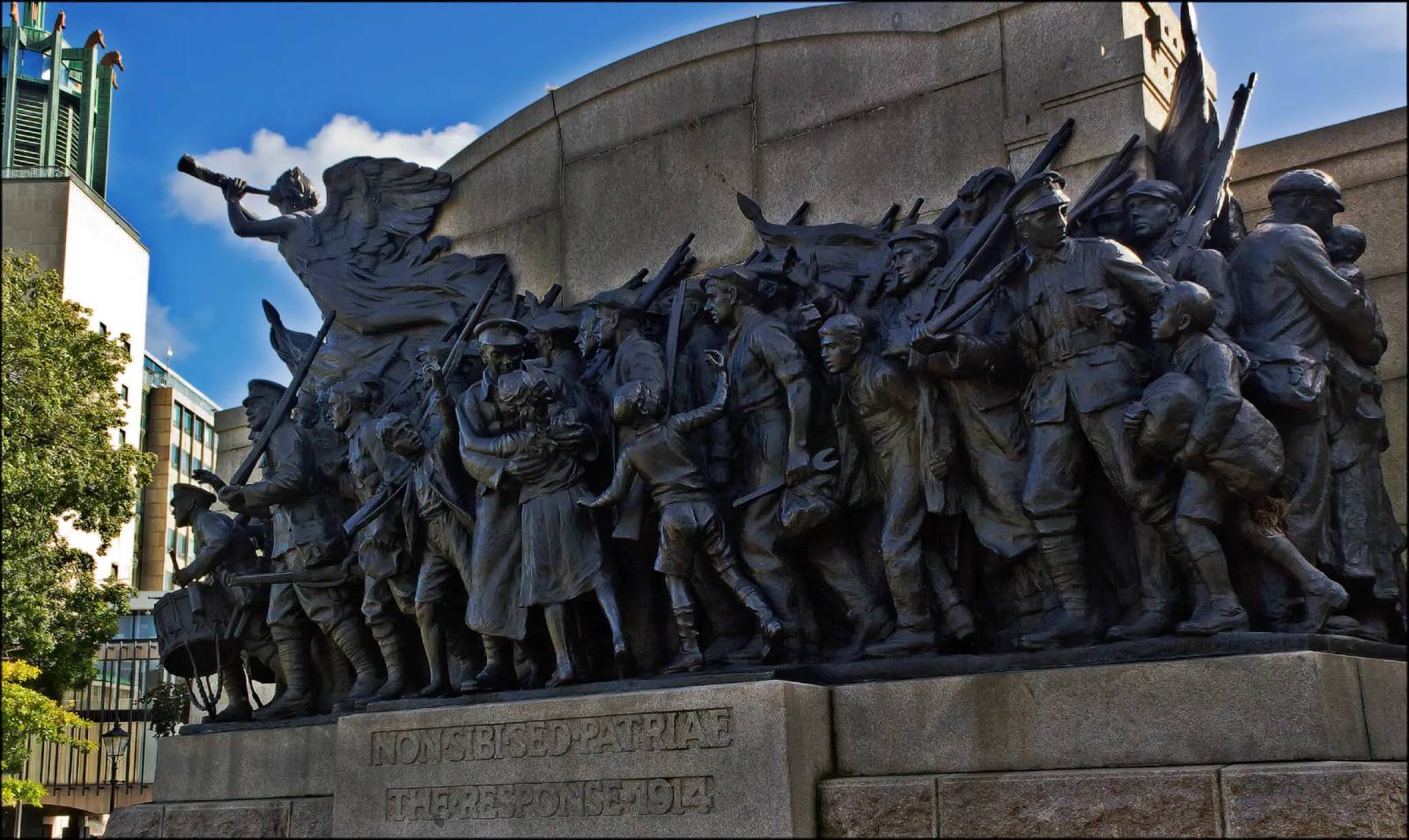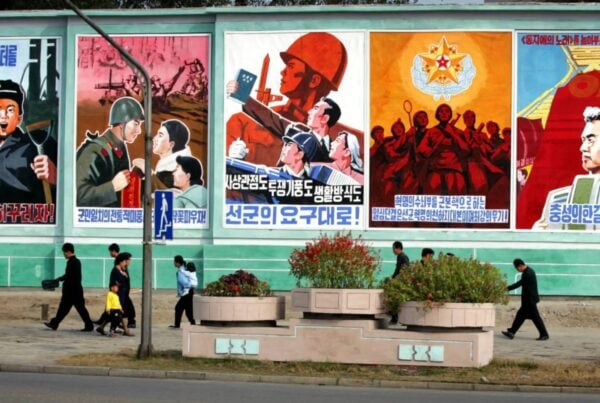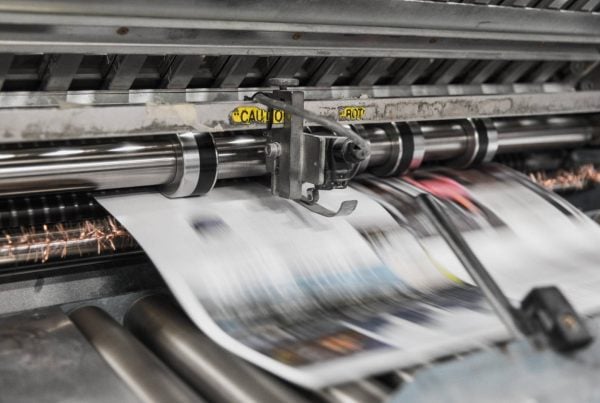Table of Contents
The Fusion of Aesthetics, Design and Military History
The intersection of art and design with military history offers a rich and complex narrative, far beyond mere aesthetics. Throughout centuries, armed forces have relied not just on brute strength and strategic prowess but also on the subtler powers of aesthetics, functionality, and symbolism to forge identities, ensure efficiency, and command presence on the battlefield. This fascinating blend of elements has shaped the evolution of military paraphernalia, including uniforms, weapons, vehicles, and emblems, reflecting a deep interplay between form and function, art and war.
Art and design in military contexts serve not only practical purposes but also carry profound symbolic weight. They encapsulate the ethos of an era, the identity of a regiment, and the innovation of the times. From the colours and patterns of uniforms that blend into landscapes to the sleek design of modern weaponry and the grandeur of military memorials, each element is a testament to the nuanced role of design in the theatre of war. This blog seeks to explore how aesthetics, functionality, and symbolism have played pivotal roles in the identity and efficiency of armed forces, tracing their influence through history.
The Evolution of Military Uniforms: A Fusion of Design and Ideology
Historical Perspective
The journey of military uniforms through the ages is a tale of evolving fashion, function, and symbolism. Ancient warriors often donned attire that signified their status or bravery, with colours and designs aimed to intimidate opponents or signify allegiance. As civilization advanced, so too did the complexity of military dress, with the Roman legions’ segmented armour and the mediaeval knights’ heraldic surcoats serving as early examples of uniformity for identification and protection.
By the 17th and 18th centuries, European armies began adopting more standardised uniforms, not only for practical reasons of identification and discipline but also to embody the emerging sense of national pride and military professionalism. The iconic redcoats of the British Army, for instance, were not just a matter of fabric; they were a statement of power and prestige.
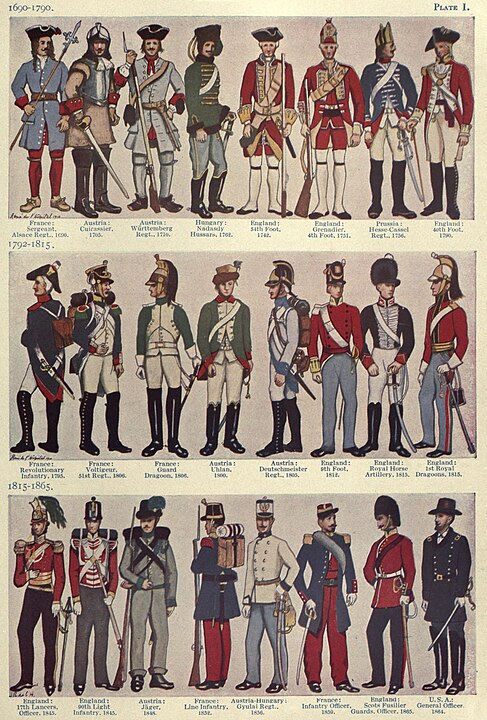
Source: Wikipedia
A particularly notable chapter in the history of military uniforms involves the Nazi regime, where the intersection of design and ideology was starkly evident. The uniforms designed for the Nazi forces, including those of the SS, were crafted with an eye towards creating a powerful visual identity. These designs, often attributed to collaboration with or influence by well-known designers of the time like Hugo Boss, aimed to project authority, instil fear, and distinguish the Nazi aesthetic from that of other military forces.
The emphasis on sharp lines, stark contrasts, and imposing insignia in Nazi uniforms was not merely a stylistic choice but a calculated effort to convey ideological purity, discipline, and superiority. The use of symbols, such as the swastika and the SS runes designed by Walter Heck, further reinforced the regime’s messaging and its insidious ideologies. The design of these uniforms played a critical role in the visual propaganda of the regime, symbolising a dark chapter in the intertwining narratives of fashion, military history, and political ideology.
Runes Used by The SS
| Rune | Name | Meaning |
|---|---|---|
| doppelte Siegrune | Victory or Schutzstaffel | |
| Eif | Zeal/enthusiasm | |
| Ger | Communal spirit | |
| Hagal | Faith in Nazism | |
| Leben | Life | |
| Odal | Kinship, family, and blood unity | |
| Opfer | Sacrifice | |
| Tod | Death | |
| Tyr | Leadership in battle |
This aspect of uniform design serves as a sobering reminder of how art and design can be co-opted to serve harmful ideologies, underlining the importance of considering the ethical dimensions of design in any context. As we reflect on the evolution of military uniforms, it becomes evident that these garments are not only about functionality and symbolism but also about the power of design to influence, inspire, or intimidate.
The legacy of military uniform design, with its blend of aesthetic appeal, functional necessity, and symbolic power, underscores the complex relationship between fashion and warfare, identity and ideology. As we continue to examine the role of uniforms in building unit cohesion and identity, including the use of colours and insignia, it’s crucial to acknowledge the lessons of the past and the responsibility that comes with the power of design.
Logos, Emblems, Flags and the Branding of War
In the tapestry of military history, logos, emblems, and flags stand as powerful symbols, weaving together the threads of unity, identity, and tradition. These symbols, transcending their visual elements, become embodiments of the values, courage, and commitments of the forces they represent. The process of creating these insignias is a meticulous one, involving a deep understanding of a unit’s history, achievements, and ethos. This symbolism serves not only as a mark of distinction but also as a source of pride and a rallying point for the troops.
Creating Identity and Fostering Unity
The significance of logos and emblems in the military extends far beyond mere identification. They are vital tools for fostering unity and esprit de corps among service members. The “Who Dares Wins” motto of the British Special Air Service (SAS), accompanied by its winged dagger emblem, is a prime example of how symbols can encapsulate the spirit of a unit. This emblem and motto have become synonymous with bravery, elite capability, and a relentless pursuit of excellence, qualities that define the SAS. Such symbols are instantly recognisable, inspiring not only those within the ranks but also the wider public.

The creation of these symbols is a thoughtful process that taps into the heart of a unit’s identity. It reflects on historical battles, notable achievements, and the unique qualities of the troops. For example, the use of specific animals, colours, or shapes in an emblem can signify particular attributes such as strength, agility, or vigilance. The integration of these elements into a cohesive design creates a powerful emblematic identity that resonates with the unit members and their shared values.
Insignia in Modern Conflict
The tradition of using insignias to denote unit identity and ethos continues in modern conflicts. In the ongoing war in Ukraine, for instance, various military units have created and adopted their own logos and flags, not just for identification but also as symbols of resistance and national pride. These contemporary insignias often draw on historical symbols, national colours, and local motifs to create a sense of unity and purpose among the fighters. The creation and display of these emblems serve as a testament to the enduring power of symbols in warfare, offering a sense of belonging and motivation in the face of adversity.

Source: Military Land
The crafting and use of military logos, emblems, and flags embody the intertwining of artistry, history, and military strategy. They are not only tools for branding and identification but also profound expressions of a unit’s character, aspirations, and the bonds that tie its members together. As we witness in conflicts past and present, these symbols carry with them the weight of history and the hope for victory, serving as a constant reminder of the values and sacrifices inherent in military service.
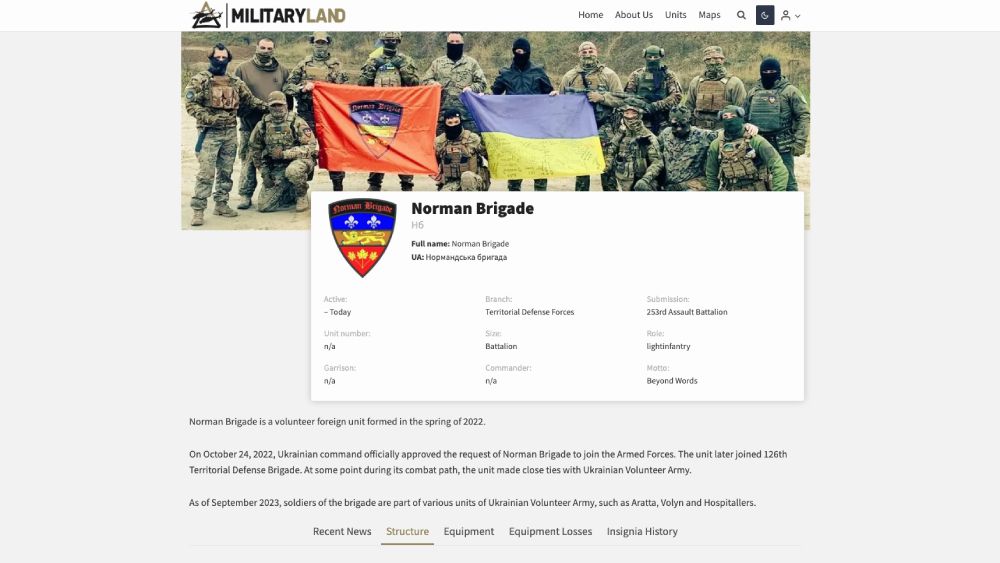
Example of Newly Formed Norman Brigade in Ukraine
The evolving landscape of military insignia, from the iconic emblems of elite units like the SAS to the emergent symbols of units in contemporary conflicts, highlights the dynamic interplay between tradition and innovation. It underscores the timeless role of logos, emblems, and flags in articulating identity, fostering unity, and symbolising the enduring spirit of those who serve.
Design Elements of Military Insignia: A Detailed Examination
The design of military insignia is a rich tapestry of symbolism, history, and identity, woven together through a language of shapes, colours, and symbols that are as profound as they are visually compelling. Each element of an emblem or logo is carefully chosen to reflect the virtues, history, and mission of the unit it represents, creating a complex narrative that resonates with those who serve and those who understand its significance.
Symbolism in Shapes and Imagery
The imagery used in military insignia is deeply symbolic, often drawing from a repertoire of elements each with its own historical and cultural significance. Eagles, swords, and shields are among the most prevalent motifs, chosen for their universal representation of martial virtues:
- Eagles are a potent symbol of freedom, sovereignty, and high aspirations. Their use in insignia signifies a unit’s broad perspective and commitment to overarching ideals and responsibilities. The eagle’s powerful flight and keen vision represent the pursuit of excellence and the importance of strategic foresight in military operations.
- Swords embody the spirit of valour and the readiness to engage in combat. In military insignia, they often signify a willingness to defend principles and take decisive action when necessary. Swords can also represent the cutting edge of technology and innovation, highlighting a unit’s advancement and tactical superiority.
- Shields stand for protection, resilience, and the safeguarding of values. They underscore a commitment to defence and the preservation of peace and security. In the context of military insignia, shields often bear other symbols or coats of arms, further enriching the narrative of heritage and duty.
The Language of Colours
Colours play a critical role in the symbolism of military insignia, conveying messages and values through their associative meanings:
- Gold is frequently used to denote excellence, honour, and high achievement. It represents the pursuit of the highest standards and the recognition of outstanding service and commitment.
- Blue, a colour associated with loyalty, trust, and stability, often appears in military logos and emblems. It reflects the deep bond of trust within the unit and with the nation or cause they serve.
- Red, symbolising courage, sacrifice, and valour, is another common colour in military insignia. It serves as a reminder of the willingness to undertake missions with bravery and to make sacrifices for the greater good.
Evolution and Adaptation
Military insignia, while retaining core themes and symbols, adapt over time to mirror shifts in roles, technological progress, and societal values. Such evolution keeps insignia relevant, reflecting the units’ current identities and capabilities. For instance, new elements might be added to symbolise recent conflict participation, technological advancements, or expanded operational scopes. Yet, the fundamental aspects of these symbols often stay unchanged, maintaining a connection across generations within the military community and fostering a sense of continuity and belonging.
The design of military insignia—encompassing symbols, colours, and their ability to evolve—narrates the unit’s history, mission, and values beyond mere identification. These elements are a source of pride and unity, embodying the service members’ commitment and spirit. Through these insignia, the military not only brands itself but also communicates its legacy, achievements, and core principles.
Branding on the Battlefield: The Power of Symbols in Modern Warfare
The concept of branding within the military sphere is a multifaceted strategy that intertwines symbolism with psychological and strategic operations. In the contemporary landscape of warfare, logos, emblems, and unit identifiers transcend their traditional roles to become key players in the psychological dimension of conflict. These symbols, strategically deployed, serve to assert dominance, instil fear, communicate strength, and foster unity, playing a pivotal role in both the physical and psychological theatres of war.
Psychological Operations and Propaganda
The strategic use of logos and emblems in psychological operations and propaganda is aimed at influencing the perceptions and morale of both allies and adversaries. The USA possesses extensive experience in conducting psychological operations (psyops), leveraging sophisticated strategies to influence perceptions and behaviours in various contexts.

An American PSYOP leaflet disseminated during the Iraq War – Source: Wikipedia
The deliberate display of a unit’s emblem in media coverage, for example, can significantly enhance its reputation, instilling a sense of pride among its members while fostering a formidable image. On social media platforms, these symbols can quickly become viral, amplifying their impact and reach, serving as modern-day war banners that rally support and spread messages globally.
In enemy territories, the presence of these symbols can be a psychological tactic designed to demoralise opposition forces and civilian populations by showcasing the presence and power of an invading or occupying force. Conversely, among allied forces and supportive populations, these symbols act as beacons of resilience, hope, and shared purpose.
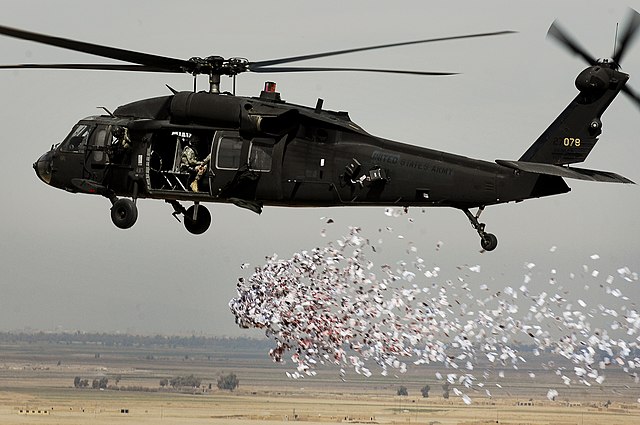
U.S. Army Soldiers from 350th Tactical Psychological Operations, 10th Mountain Division, conduct a leaflet drop in several villages surrounding Hawijah, to reinforce the need for self government in Kirkuk Province, Iraq, March 6, 2008 – Source – Wikipedia
The Dichotomy of Military Operation Branding
The naming of military operations, such as “Operation Enduring Freedom” or “Operation Iraqi Freedom”, reflects a strategic effort to frame conflicts within a narrative that resonates positively with the initiating nation and its allies. These names often carry connotations of valour, liberation, and moral high ground, aimed at rallying support, justifying the cause, and ensuring a cohesive and motivated force. However, this narrative framing introduces a significant dichotomy, as the perception of these operation names can dramatically differ between those conducting the operation and those on the receiving end of its actions.
Perception Among the Initiating Forces
For the nations and forces initiating or participating in an operation, the name is crafted to embody a just cause. “Operation Enduring Freedom,” for example, is designed to convey a mission of liberation and the defence of democratic values. This positive spin is crucial for maintaining morale among troops, securing public support within the home country, and legitimising the campaign on the international stage. The chosen names aim to encapsulate the essence of the mission’s objectives, presenting the operation as a necessary and noble endeavour in the pursuit of peace, freedom, or security.
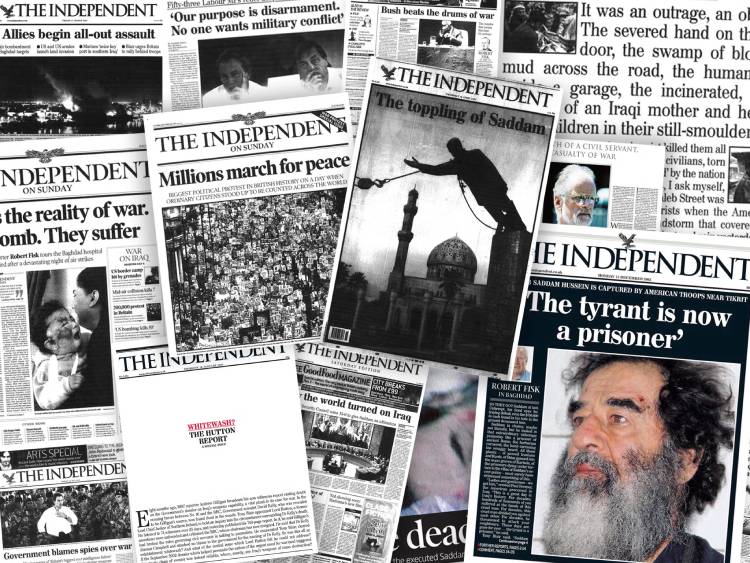
Source: The Independent
Contrast in Perception Among Those Affected
Conversely, for the populations in the regions where these operations are conducted, the names can ring hollow or even appear as a grim irony. What is framed as a quest for liberation by one party can be experienced as invasion, occupation, or unwelcome interference by the other. The positive connotations embedded in the operation’s branding are often lost on those who bear the brunt of the conflict, facing displacement, danger, and the upheaval of their social and political landscapes. For these individuals and communities, the names of such operations can evoke feelings of fear, resentment, and scepticism, highlighting a stark contrast in the narrative perceived by different parties involved in or affected by the conflict.
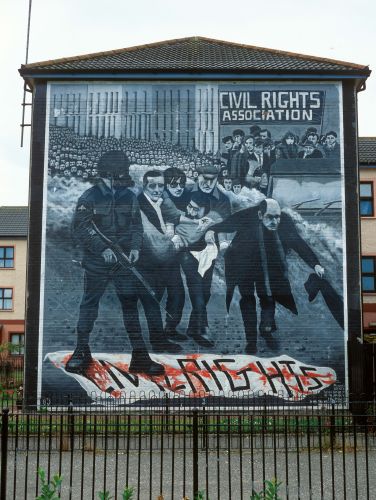
Bloody Sunday Mural Ireland – Source: cain.ulster.ac.uk
The Juxtaposition of Narratives
This juxtaposition of narratives underscores the complex interplay between military strategy, psychological operations, and the power of branding. While effective for rallying support and justifying actions from one perspective, the same names can exacerbate tensions, sow discord, and undermine the perceived legitimacy of the operation among those on the opposing side. The disparity in perceptions serves as a reminder of the profound impacts of conflict on human lives and the subjective nature of justice and freedom.
Understanding this dichotomy is crucial for comprehending the full spectrum of effects that military operations have on global perceptions and international relations. It highlights the need for careful consideration in the framing of military endeavours, acknowledging the diverse impacts these names and narratives have on all parties involved. The branding of military operations, therefore, is not just a matter of strategic communication but also a reflection of the deeper ethical and philosophical questions that underpin the nature of conflict and intervention in the modern world.
The Intersection of Art, Psychology, and Strategy
The role of logos, emblems, and branding in the military domain illustrates a compelling intersection of art, psychology, and strategy. These symbols are far from mere decorative or ceremonial elements; they are imbued with profound significance, serving as badges of honour, markers of identity, and strategic tools in the theatre of war. Their design and deployment reflect a deep understanding of the psychological terrain of warfare, where morale, perception, and identity play critical roles in the success of military operations.
As warfare continues to evolve with technological and societal changes, the strategic use of branding and symbolism remains constant, adapting to new platforms and mediums but always serving as a vital component of military strategy. These symbols, whether carried on a banner, displayed in digital media, or emblazoned on equipment, continue to unite, inspire, and define the spirit and strength of military forces in the modern era.
The role of logos, emblems, and branding in the military is a fascinating intersection of art, psychology, and strategy. These symbols are not merely ornamental but are imbued with deep significance, serving as a badge of honour, a marker of identity, and a tool in the theatre of war.
Flags in Warfare: Symbols of Unity and Sovereignty
Flags have long served as potent symbols in the theatre of warfare, embodying the essence of a nation’s identity, its military strength, and its collective spirit. Beyond their use as markers of territory or identifiers in the chaos of battle, flags carry with them a deep sense of pride, unity, and historical significance. The design of these flags, rich in symbolism and colour, plays a crucial role in rallying troops, inspiring nationalistic fervour, and asserting sovereignty in the face of adversity.
The Semiotics of Flag Design
The visual elements of a flag—its colours, symbols, and patterns—are meticulously chosen to convey specific meanings and values. Colours such as red often symbolise bravery and sacrifice, while blue can represent justice and perseverance. Symbols like stars, crosses, or crescents are imbued with historical and cultural significance, pointing to a nation’s heritage, religious beliefs, or aspirations.
In the context of warfare, the flag becomes a beacon, a rallying point for soldiers and citizens alike. It is a reminder of what they are fighting for: their land, their rights, and their way of life. The flag’s presence on the battlefield serves as a morale booster, a symbol of resistance against the enemy, and a sign of hope amidst despair.
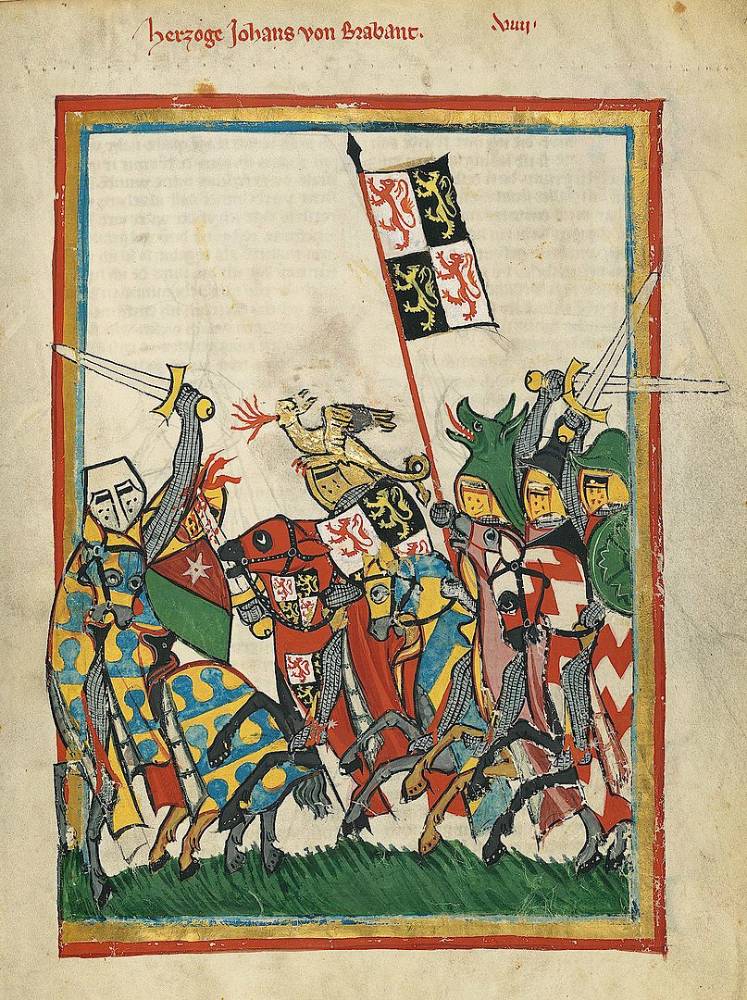
Knight (jan I Van Brabant) Flying a Heraldic Flag in Battle – Source: Wikipedia
Flags and Military Strategy
Strategically, flags have been employed to communicate positions, signal movements, or denote units within larger forces. In naval warfare, for instance, flag signals are crucial for coordinating actions among ships beyond the range of voice or radio. Similarly, in land engagements, the sight of a flag can orient troops, marking the location of command posts or rallying points.
Moreover, capturing or defending a flag has held great psychological value throughout military history. The capture of an enemy’s flag is not just a tactical victory but also a symbolic one, demoralising the adversary while boosting the victors’ spirits. Conversely, the defence of a flag can become a focal point of resistance, embodying the determination to stand against overwhelming odds.
Honouring the Fallen: The Symbolic Use of Flags
The tradition of draping a flag over the coffin of a fallen soldier is a poignant testament to the respect and gratitude bestowed upon those who have served. This act symbolises the nation’s acknowledgment of the soldier’s ultimate sacrifice for their country’s ideals—liberty, honour, and duty. The flag, in this context, transcends its material form, becoming a sacred emblem of commitment, sacrifice, and the profound loss experienced by the bereaved.
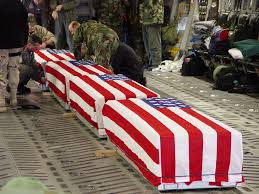
This ceremonial use of the flag in military funerals or when returning the remains of soldiers to their homeland conveys a deep sense of national mourning and collective remembrance. It serves as a final tribute to the individual’s service and sacrifice, enveloping their last journey in the colours for which they fought. Similarly, the practice of draping the coffin with a flag before it is sent off to sea for a burial reflects a timeless maritime tradition, symbolising the eternal bond between the sailor, their ship, and their country.
A Symbol of Continuity and Legacy
Moreover, the flag that accompanies soldiers in life and in death is a powerful symbol of the continuity between generations of service members. It links the past and present, reminding those in uniform of the legacy they inherit and the duty to uphold the values represented by their flag. The handing over of the flag to the next of kin during military funerals is not just a gesture of condolence but a profound act of passing on a legacy of honour, courage, and sacrifice.
The use of flags in these contexts underscores their role not just in warfare and national identity but in the personal and collective grieving process. It highlights the flags’ capacity to carry deep emotional resonance, serving as a tangible representation of loss, respect, and the indomitable spirit of those who serve.
Evolution and Adaptation
As warfare has evolved, so too has the role and design of flags. Modern conflicts may see less of flags fluttering on battlefields, replaced by digital communications and satellite imagery. Yet, their symbolic power remains undiminished, whether adorning military uniforms as patches, flown over military installations, or carried in ceremonies. Flags continue to adapt, incorporating symbols of new alliances or reflecting changes in national identity, yet their core function as symbols of unity and sovereignty endures.
In every fold and colour, flags in warfare encapsulate the spirit of a people and their armed forces. They are not merely pieces of fabric but profound symbols of identity, resistance, and hope, woven into the very fabric of military and national history.
The Significance of Colour in Military Design
Colour Theory
The use of colour in military design is both a practical and symbolic decision, deeply rooted in centuries of warfare and tradition. Colour theory in the military context goes beyond mere aesthetics, serving critical functions such as camouflage, unit identification, and psychological warfare. The development and application of camouflage techniques, for instance, are a direct response to the need for stealth and concealment, with colours and patterns designed to blend with specific environments, from the green hues of the jungle to the sandy shades of the desert.
Beyond functionality, colours carry symbolic meanings, often reflecting historical allegiances, branch-specific roles, or honouring past victories. Navy blue, for example, is synonymous with naval forces around the world, symbolising the deep and enduring connection between fleets and the oceans they traverse. Red, historically used by the British Empire, has signified courage and sacrifice, while green often denotes infantry and direct land combat roles.
The Symbolic Palette of UK Military Berets
Military berets have become iconic in their use and symbolism within armed forces worldwide. Each military beret colour serves a specific purpose, often denoting the type of unit, its specialisation, or its historical lineage. Here are a few examples from various countries that illustrate the diversity and significance of beret colours:
- Khaki: Worn by the Foot Guards, Honourable Artillery Company, and most English and Welsh infantry regiments, khaki berets symbolise the tradition and heritage of some of the oldest units in the British Army.
- Maroon: The maroon beret, synonymous with the Parachute Regiment and airborne forces globally, signifies the courage and elite status of paratroopers. It is also worn by all ranks serving within 16 Air Assault Brigade, marking them as part of an airborne rapid deployment force.
- Beige (Sand Color): The beige beret is famously worn by the Special Air Service (SAS), representing their role in special operations and their unique place within the British Army. This colour is associated with the SAS’s exceptional capabilities in desert and arid environments.
- Green: A wide array of units wear green berets, each with its specific shade and significance. The Commando Green beret, for example, is worn by commando-qualified Royal Marines and signifies their rigorous training and versatility. Similarly, the Rifle green beret is worn by units like The Rifles and the Royal Gurkha Rifles, indicating their distinguished infantry roles.
- UN Blue: Worn by personnel serving with the United Nations on peacekeeping missions, the UN blue beret symbolises the international effort to maintain peace and security. It represents the neutrality and commitment of the wearer to peacekeeping objectives.
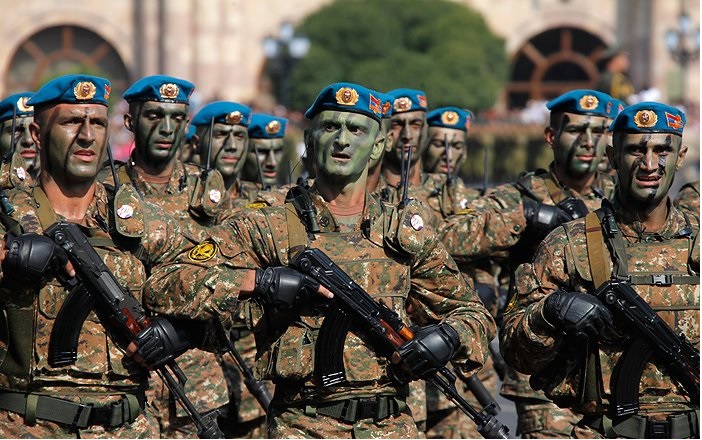
Armenian Airborne Forces Source: Wikipedia
Beyond Colour: A Symbol of Unity and Expertise
The colour of a military beret goes beyond aesthetic appeal, encapsulating the essence of the unit’s mission, ethos, and history. It fosters a sense of pride and belonging among its wearers, uniting them under a shared identity. Furthermore, the beret, with its distinctive shape and colour, serves as a visible marker of military professionalism and expertise, recognisable to both military personnel and civilians.
The adoption and use of specific beret colours by military units worldwide underscore the deep-rooted traditions and evolving nature of military symbols. It reflects an ongoing commitment to preserving the heritage of each unit while adapting to contemporary military challenges and roles. As such, the military beret stands as a testament to the enduring significance of colour in military design, serving both practical and symbolic functions in the complex tapestry of armed forces around the globe.
Psychological Impact
The psychological impact of colour in military design cannot be overstated. Colours are used strategically to boost morale among troops, intimidate opponents, and even influence the outcome of engagements without a single shot being fired. Bright, bold colours can project power and confidence, serving as a visual declaration of strength and readiness for battle.
Conversely, the use of subdued, earth-toned colours in modern uniforms and equipment is not just practical for concealment; it also reflects a shift towards more covert, strategic operations where the element of surprise can be a decisive factor. The introduction of digital camouflage patterns, incorporating pixels of multiple colours, exemplifies the blend of psychological and functional considerations in contemporary military design.
Cultural and Historical Influences
The choice of colours in military design is also influenced by cultural and historical factors, with certain hues holding particular significance within different societies. These colours can reflect national identity, regional affiliations, and historical legacies, embedding a layer of meaning into the fabric of military attire and equipment.
In many cultures, colours are imbued with specific attributes and emotions — red for bravery, white for purity, black for mourning or intimidation. These associations influence military design, guiding the choice of colours for flags, uniforms, and insignia. The adoption of specific colours can thus serve to honour tradition, reinforce cultural bonds, and foster a sense of unity and purpose among the ranks.
The strategic use of colour in military contexts underscores the complex interplay between visibility and invisibility, symbolism and functionality. From the camouflage that blends seamlessly into the background to the vibrant hues that adorn ceremonial dress, colour in military design is a powerful tool for communication, strategy, and identity.
Design and Functionality: A Deeper Dive into Military Uniform Evolution
The intricate balance between aesthetic appeal and practical necessity has long defined the evolution of military uniforms. This delicate equilibrium is aimed not just at creating visually commanding attire but also at ensuring functionality under the demanding conditions of warfare. The progression from basic protective gear to sophisticated combat uniforms reflects a continuous adaptation to the changing landscapes of war, where camouflage, protection, and utility play pivotal roles.
Camouflage: The Art of Concealment
The concept of camouflage emerged as a fundamental aspect of uniform design in the 20th century, marking a significant shift in military tactics towards stealth and subterfuge. The development of camouflage patterns was driven by a need to blend into specific environments, making soldiers less visible to the enemy. This was not just about colour but about understanding the complex interplay of light, shape, and movement in natural settings.
Early camouflage efforts focused on simple colour schemes, such as the khaki used in desert environments, which was designed to blend with the sandy terrain. However, as warfare moved to different theatres, the design of military uniforms evolved to include a variety of patterns. Woodland camouflage, with its mix of green, brown, and black, aimed to mimic the dense foliage and shadows of forested areas. Similarly, urban and arctic camo patterns were developed to suit the unique challenges of fighting in cities and snow-covered landscapes.
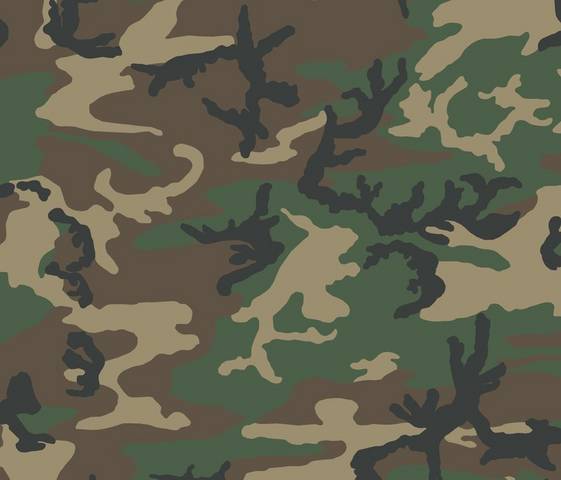
Source: Wikipedia
The development of digital camouflage patterns in the late 20th and early 21st centuries represents a leap forward in concealment technology. These patterns, camo composed of pixelated micro-patterns, are designed to disrupt the human eye’s ability to discern shape and distance, offering effectiveness across multiple environments.
Protection: Beyond the Battlefield
The protective elements of military uniforms have evolved significantly from the chainmail and armour plates of the past. Modern combat attire incorporates advanced materials like Kevlar and aramid fibres, which offer bulletproof and shrapnel-resistant capabilities while maintaining a degree of mobility crucial for a soldier’s performance. Helmets, too, have undergone a transformation, with current designs providing not only improved ballistic protection but also integrated communication systems and mounts for night-vision devices.
The concept of protection in uniform design also extends to environmental hazards, with uniforms offering resistance to fire, chemical agents, and extreme temperatures. This holistic approach to protection ensures that soldiers are equipped to face not just the enemy but the rigours of their operational environments.
Utility: Function Meets Form
The utility of a military uniform extends its functionality beyond mere wearability. Modern designs incorporate an array of pockets, belts, and attachments, meticulously placed to ensure soldiers can carry essential gear, ammunition, and supplies without compromising mobility or comfort. The layout of these features is carefully considered to ensure easy access and distribution of weight, crucial factors during extended operations.
Moreover, the integration of modular systems, such as the MOLLE (Modular Lightweight Load-carrying Equipment) system, allows for customisation of gear based on mission specifics. This versatility reflects an understanding of the diverse roles and requirements of modern military operations, ensuring that soldiers are not only well-protected but also fully equipped to fulfil their duties.
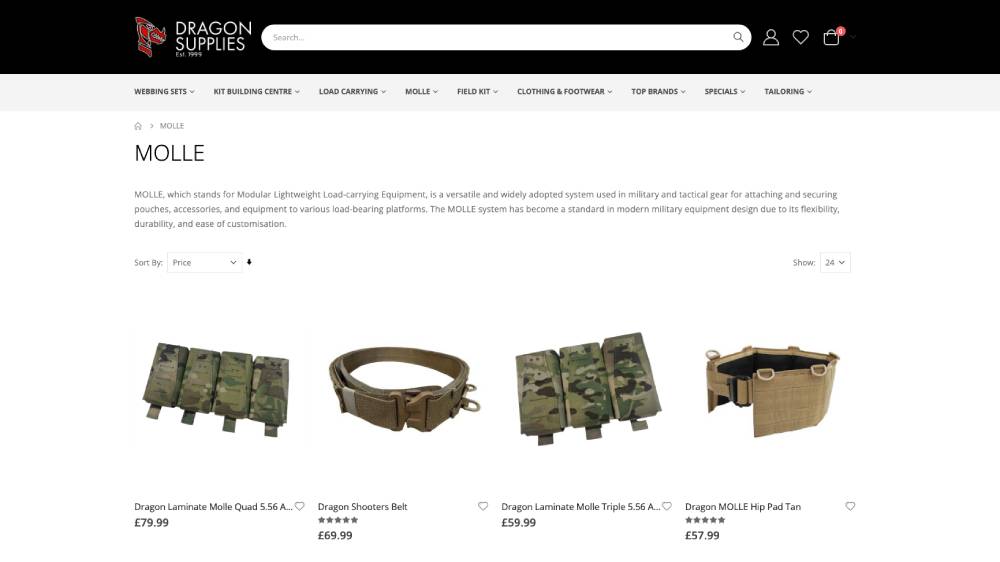
Source: dragonsupplies.co.uk
The design and functionality of military uniforms represent a synthesis of tradition and innovation, where every element serves a purpose. From the strategic use of camouflage to the integration of advanced protective materials and the thoughtful arrangement of utility features, the evolution of military attire underscores the relentless pursuit of efficiency, safety, and effectiveness in the face of constantly changing threats and conditions.
Symbolism and Identity
Uniforms are more than just clothing; they are a source of pride and unity among soldiers. The colours, insignia, and badges worn are not arbitrary but are imbued with deep symbolic meaning, representing the history, achievements, and ethos of a military unit. These symbols serve to build a strong sense of identity and cohesion within a group, essential for morale and discipline.
In many armed forces, ceremonial uniforms retain historical styles and colours, serving as a living history of the regiment’s heritage and honours. The pomp and circumstance of military parades, with soldiers arrayed in full regalia, underscore the enduring connection between a military force and its storied past.
Through the lens of military uniforms, we witness the confluence of necessity and symbolism, where each thread weaves together tales of valour, unity, and the relentless march of innovation. This evolution mirrors the broader historical currents of warfare, technology, and societal values, highlighting the indelible mark of art and design on the fabric of military history.
The Intersection of Art and War
War Artists and Photographers
The unique intersection of art and war captures the complexities and contradictions of human conflict through the lens of creativity and expression. War artists and photographers, often placed in the heart of turmoil, wield their brushes and cameras as tools to document, interpret, and sometimes protest the realities of war. Their work transcends mere reportage, offering insights into the human condition under extreme circumstances.
Historically, war artists have been commissioned to record battles, landscapes, and life on the home front, creating a visual archive that complements written history. These artworks not only capture moments of bravery and tragedy but also reflect the artists’ emotional responses to the chaos and destruction they witness. From the haunting trench art of World War I to the evocative war photography of conflicts in Vietnam and the Middle East, these visual narratives serve as powerful reminders of the impacts of war.
Propaganda Art & Murals
Art has also been a potent tool for propaganda, employed by governments and factions to rally support, demonise the enemy, or instil nationalistic fervour. Propaganda art takes various forms, from posters and murals to films and cartoons, each designed to influence public opinion and morale. The visual language of propaganda is deliberate and compelling, utilising strong imagery, symbolism, and emotive messaging to achieve its objectives.
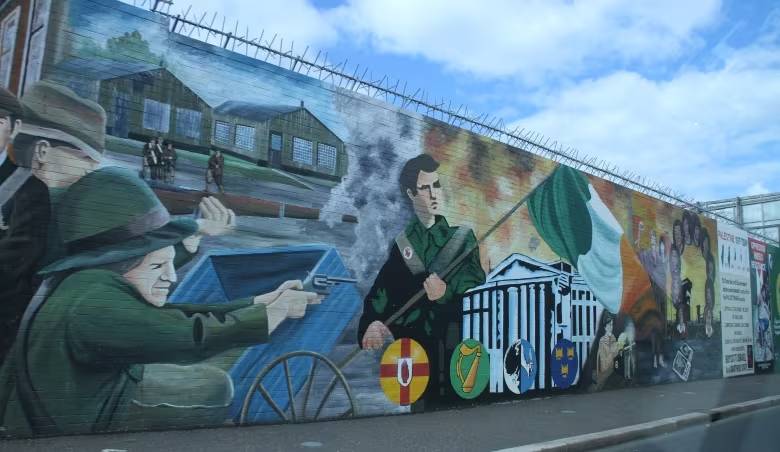
Mural Peace Wall Belfast Ireland – Source: cbc.ca
Throughout both World Wars, propaganda posters played a critical role in recruitment campaigns, war bond drives, and home front morale-boosting efforts. The iconic “We Can Do It!” poster and the stern gaze of Uncle Sam in “I Want YOU for U.S. Army” are enduring examples of how art can shape perceptions and motivate populations during times of conflict.

Source: loc.gov
Memorials and Monuments: A Reflection on the Cost of War
Beyond the battlefield and the propaganda front, art and design plays a crucial role in commemorating wars and honouring those who served. War memorials and monuments, often grand in scale and profound in symbolism, provide spaces for reflection, remembrance, and healing. These structures are meticulously designed to convey the gravity of sacrifice and the hope for peace, bridging the past with the present and future.
Driving through the villages, towns, and cities of the UK, one is struck by the omnipresence of memorials dedicated to those who lost their lives in World War I and World War II. These memorials, found in the heart of communities across the nation, stand as stark reminders of the cost of war. Each stone and name inscribed on these monuments speaks to the profound impact of conflict on individual lives and the collective memory of a community. They serve not only as a tribute to the fallen but also as a powerful statement of the enduring hope for peace.
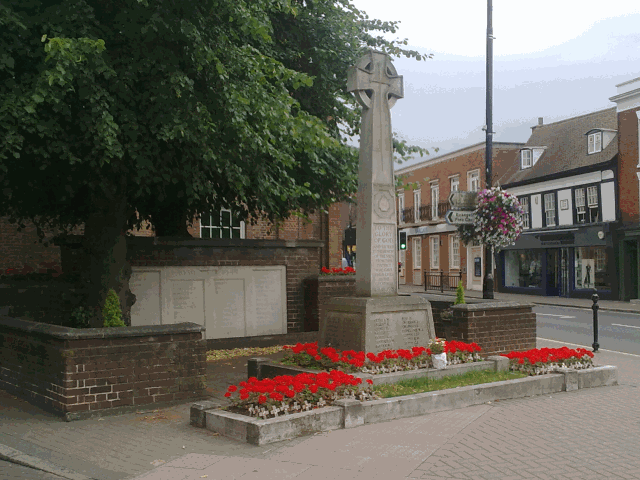
Billericay, Essex, UK War Memorial – Source: warmemorialsonline.org.uk
From the sombre and expansive Vietnam Veterans Memorial in Washington, D.C., to the towering Thiepval Memorial to the Missing of the Somme, and to the more intimate memorials dotting the UK landscape, these sites embody the collective grief and respect of a nation. Their design and presence facilitate a communal process of mourning and remembrance, ensuring that the lessons and legacies of wars are not forgotten.
Art and war, though seemingly at odds, are intricately connected, with each influencing and shaping the other in profound ways. Through the expressive power of art, the multifaceted experiences of war—its heroism, horror, and heartbreak—are captured and conveyed, offering perspectives that challenge, enlighten, and remind us of the profound costs of conflict. The presence of war memorials across the UK, and indeed the world, underscores the universal impact of warfare and the shared desire to remember and honour those who have paid the ultimate price.
These memorials remind us that the consequences of war extend far beyond the battlefields, touching the lives of generations and shaping the landscapes of our communities. They call upon us to reflect on the past, consider the present, and hope for a future where such sacrifices are no longer necessary.
Conclusion
This discussion shows how aesthetics and functionality are essential in military design. Military uniforms, for example, combine camouflage with unit identities, while weapons balance beauty with efficiency. Every aspect, from engineering to the symbolism of colors, influences how wars are fought and remembered.
Exploring military history through art and design reveals the significance of details like uniform stitches or the shape of a jet. It reflects our attempts to bring sense and beauty to the chaos of war and honour war experiences.
As we conclude, remember that the relationship between art and war continues to evolve with each conflict. This ongoing story underscores our constant efforts to balance aesthetics with practicality. For those interested in further exploring this topic, resources such as museums and digital collections offer insights into how war aesthetics have shaped and been shaped by history.
Further Reading




